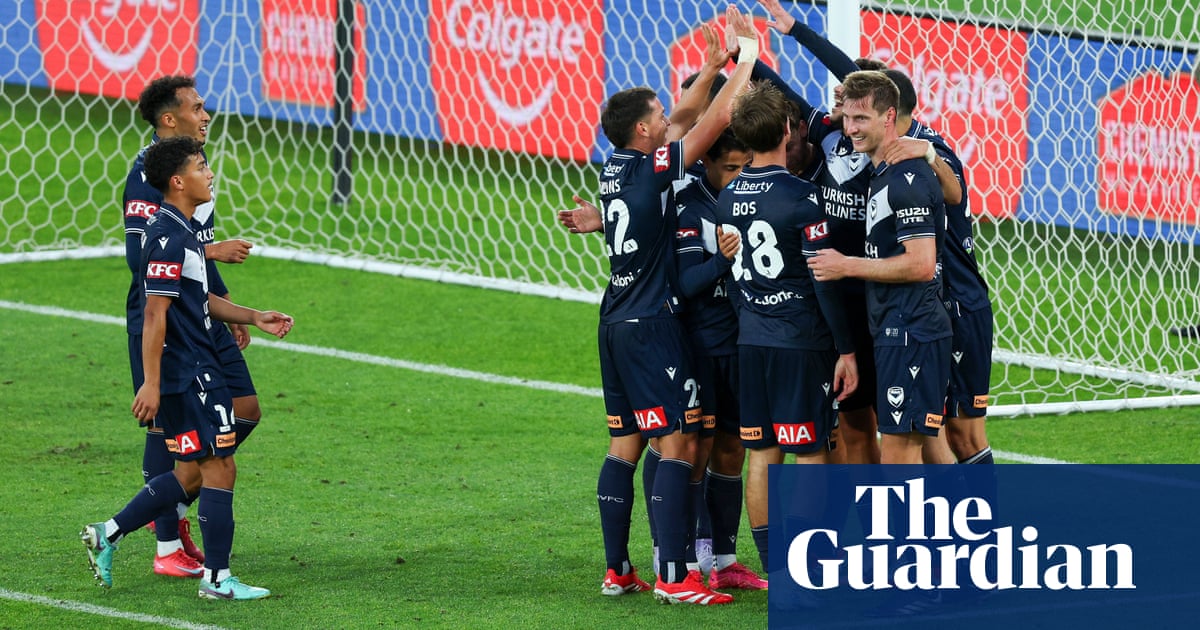TheA-League Menwill introduce a stricter salary cap to prevent clubs from engaging in a “player-spend arms race” under major reforms designed to ensure the competition’s long-term viability.
But Professional Footballers Australia (PFA) has rejected the proposal, setting the scene for difficult negotiations around the next collective bargaining agreement set to commence within weeks.
The competition’s operator Australian Professional Leagues (APL) is on track to break even this year, which would prevent another drop in distributions to clubs, many of which have found themselves in financial trouble in recent years.
Under the reforms, a hard cap of $3m in a club’s player wages will be introduced for the 2026/27 season – the first in the next broadcast cycle – with a single marquee player allowed outside the cap. Transitional arrangements will be in place next season, but clubs will not be penalised for breaches until 2026/27.
APL chair Stephen Conroy, who hasreplaced Nick Garcia as the lead executive on the A-Leagues, said it would impact every club.
“What we’re seeing is what we frankly think is an unsustainable trend in terms of their performance, their profitability, their losses,” Conroy said.
Most club financial reports are not publicly available, but Melbourne Victory’s accounts lodged with Asic last year showed a loss in 2023-24of almost $10m.
The club has subsequently received investment from Brighton and Hove Albion owner and chairman Tony Bloom, who has acquired a 19.1% stake.
The $3m hard cap replaces the current $2.55m “soft cap” with six concessional categories. The current arrangements have created an even competition, but have not prevented clubs from spending beyond their means.
“It’s one of the reasons why we look at the player-spend arms race, and we just scratch our heads and go, ‘Okay, so the Swiss cheese we’ve currently got, we need to change’,” Conroy said.
PFA chief executive Beau Busch said he didn’t believe the APL was on the right track. “Today’s announcement is simply the APL negotiating with themselves,” he said. “As always, the employment conditions of players will be the product of proper, good faith bargaining; not unilateral decision making.”
Busch warned the proposal would limit the potential of the competition’s wealthiest clubs to retain players and hinder their ambitions totap into increasing prize money opportunities available in Asian competitions.
“They would weaken the product during a broadcast renegotiation and at a time when the league is desperate to attract fans,” he said.
According to PFA, the average payments per club was $4.8m in 2023-24.
A new broadcast agreement and collective bargaining agreement are due for the 2026/27 season and negotiations around both are expected to escalate in coming months.
Conroy said his organisation is not suggesting a reduction in the salary floor, which has remained at $2.25m per club for several years.
Sign up toAustralia Sport
Get a daily roundup of the latest sports news, features and comment from our Australian sports desk
after newsletter promotion
“I would imagine the PFA have got a view, but that will be subject to negotiations over the next six months going forward, but there’s no secret plan to sneak in a floor reduction on our side,” he said.
Following the introduction of the hard cap in 2026/27, Conroy said a new model would be introduced in 2027/28 that would limit club spending based on revenues, following consultation with the clubs and PFA.
Conroy was optimistic APL was on track to break even this year and maintain the existing level of distributions to clubs, although the final outcome would depend on several factors, including ticket sales for the finals series.
“We have stabilised APL centrally, what we’ve got to do is work with the clubs through these measures to ensure that every club is stable,” he said.
Conroy has taken a more hands on role now that former league commissioner Garcia has moved into a new role at APL as chief expansion and investment officer “working directly with the board on key projects to support the growth of the game,” Conroy said. “Nick is still part of the team.”
The former Labor senator also said Canberra United will continue to play in theA-League Womencompetition next season, and a formal announcement is expected shortly. But a deal for a new owner of a combined men’s and women’s club in the capital is yet to eventuate.
“We’re currently in discussions with two different consortiums in Canberra, and unfortunately, a lot of good promises, a lot of good discussions have come to nothing,” he said.
No changes are currently planned for the A-League Women competition, though the APL was working with Auckland on their entry as early as next season. Macarthur remains the only A-League Men outfit without a women’s counterpart.
“It’s a requirement to have two clubs as part of the licence, but we’ve also got to make sure that we’re keeping the clubs afloat at the same time,” Conroy said.
